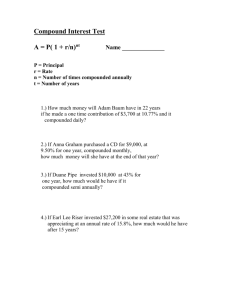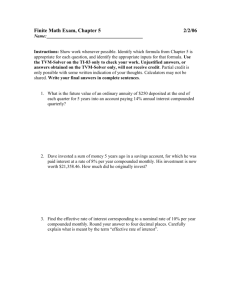Math 1320 Chapter 2: The Mathematics of Finance
advertisement
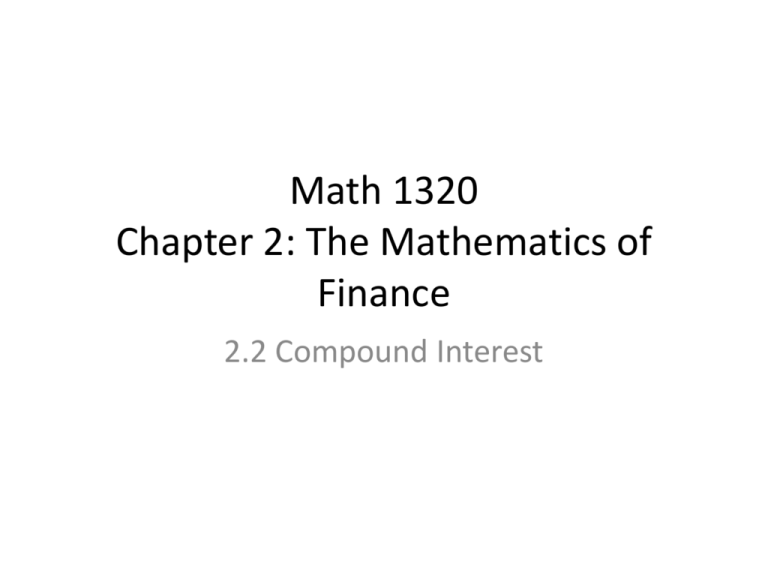
Math 1320 Chapter 2: The Mathematics of Finance 2.2 Compound Interest Definition • The future value of an investment of PV dollars earning interest at an annual rate of r compounded (reinvested) m times per year for a period of t years is 𝐹𝑉 = 𝑃𝑉(1 + 𝑖)𝑛 , where 𝑟 𝑖 = and 𝑛 = 𝑚𝑡. 𝑚 • Notes: If possible, always find i and n first. However, if i is an ugly decimal, you can use the fraction in the formula for a more exact result. Examples • Calculate the FV of an investment of the given amount at the stated interest rate after the stated amount of time. Determine by how much each investment has grown. 1. $8000, at 4% per year, compounded semiannually, for 8 years. 2. $16,000, at 2.5% per year, compounded quarterly, for 5 years. 3. $50,000, at 1.5% per year, compounded weekly, for 5 years. Examples • Calculate the PV of an investment that will be worth the given amount at the stated interest rate after the stated amount of time. 1. $7000, after 10 years, at 5% per year compounded monthly. 2. $12,500, after 5 years, at 7% per year compounded daily Definition • The effective annual interest rate 𝑟𝑒𝑓𝑓 of an investment paying a nominal interest rate of 𝑟𝑛𝑜𝑚 compounded m times per year is 𝑟𝑒𝑓𝑓 = 𝑟𝑛𝑜𝑚 𝑚 (1 + ) −1. 𝑚 • Fact: To compare rates of investments with different compounding periods, always compare the effective interest rates rather than the nominal rates. Examples • Find the effective annual interest rate. 1. 5% compounded quarterly 2. 5% compounded monthly 3. 9% compounded monthly
![Practice Quiz Compound Interest [with answers]](http://s3.studylib.net/store/data/008331665_1-e5f9ad7c540d78db3115f167e25be91a-300x300.png)
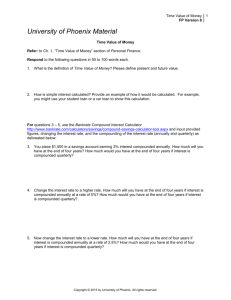
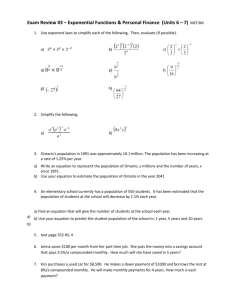
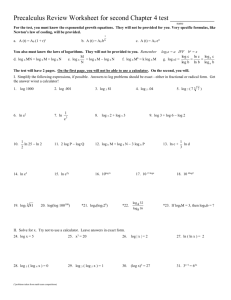
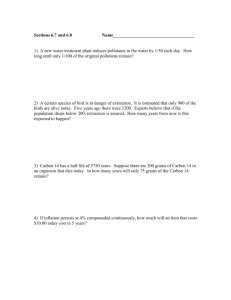

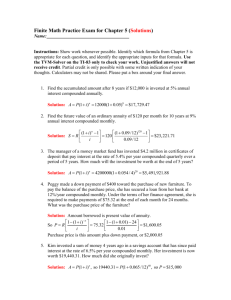
![Practice Quiz 6: on Chapter 13 Solutions [1] (13.1 #9) The](http://s3.studylib.net/store/data/008331662_1-d5cef485f999c0b1a8223141bb824d90-300x300.png)
